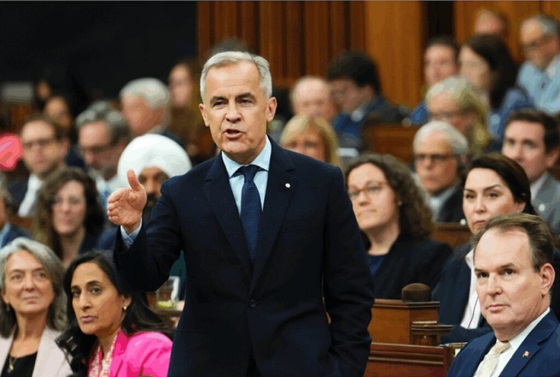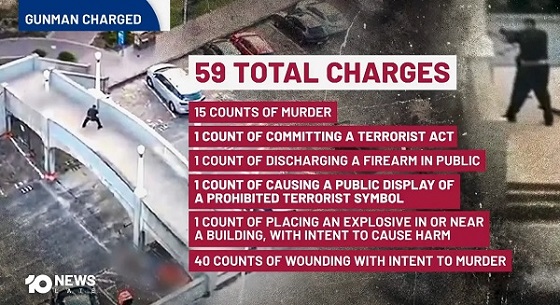National
Trudeau’s online harms bill threatens freedom of expression, constitutional lawyer warns

From LifeSiteNews
The legislation could further regulate the internet in Canada by allowing a new digital safety commission to conduct ‘secret commission hearings’ against those found to have violated the new law.
A top constitutional lawyer warned that the federal government’s Online Harms Act to further regulate the internet will allow a new digital safety commission to conduct “secret commission hearings” against those found to have violated the new law, raising “serious concerns for the freedom of expression” of Canadians online.
Marty Moore, who serves as the litigation director for the Justice Centre for Constitutional Freedoms-funded Charter Advocates Canada, told LifeSiteNews on Tuesday that Bill C-63 will allow for the “creation of a new government agency with a broad mandate to promote ‘online safety’ and target ‘harmful content.’”
“The use of the term ‘safety’ is misleading, when the government through Bill C-63 is clearly seeking to censor expression simply based on its content, and not on its actual effect,” he told LifeSiteNews.
Moore noted that the bill will also “open doors for government regulation to target undefined psychological harm.”
The new government bill was introduced Monday by Justice Minister Arif Virani in the House of Commons and passed its first reading.
Bill C-63 will create the Online Harms Act and modify existing laws, amending the Criminal Code as well as the Canadian Human Rights Act, in what the Liberals under Prime Minister Justin Trudeau claim will target certain cases of internet content removal, notably those involving child sexual abuse and pornography.
Details of the new legislation to regulate the internet show the bill could lead to more people jailed for life for “hate crimes” or fined $50,000 and jailed for posts that the government defines as “hate speech” based on gender, race, or other categories.
The bill calls for the creation of a digital safety commission, a digital safety ombudsperson, and the digital safety office.
The ombudsperson and other offices will be charged with dealing with public complaints regarding online content as well as put forth a regulatory function in a five-person panel “appointed by the government.” This panel will monitor internet platform behaviors to hold people “accountable.”
Moore told LifeSiteNews that provincial governments have already “grossly abuse Canadians’ rights and freedoms in the name of preventing harm and ensuring safety (COVID mandates).” He noted that this bill could give the Commission the “potential reach” into “Canadian’s lives” in a “concerning” manner.
He said that while the Commission’s reach is “only vaguely undefined,” it would have the power to regulate anyone who operates a “social media service” that “has a yet-to-be-designated number of users or is “deemed a regulated service by the government without regard to the number of users.”
According to the Trudeau government, Bill C-63 aims to protect kids from online harms and crack down on non-consensual deep-fake pornography involving children and will target seven types of online harms, such as hate speech, terrorist content, incitement to violence, the sharing of non-consensual intimate images, child exploitation, cyberbullying and inciting self-harm.
Virani had many times last year hinted a new Online Harms Act bill would be forthcoming.
Law opens door to secret or ‘ex parte’ warrants, lawyer warns
Moore observed that Bill C-63 also gives the commission the ability to seek secret or “ex parte warrants to enter people’s homes and to impose massive fines.” He told LifeSiteNews this will “likely coerce those operating social media services to exceed the Commission’s requirements of censorship on Canadians’ expression.”
Moore also confirmed that the Trudeau government’s new bill will “allow for” the creation of “secret commission hearings” simply on the basis that the “commission considers secrecy to be ‘in the public interest.’”
Moore told LifeSiteNews that the bill will also allow for the digital safety commission to be made an “order of the Federal Court.” He said this brings about a “serious concern that the commission’s orders, reissued by the Federal Court, could result in people being fined and imprisoned for contempt, pursuant to Federal Courts Rules 98 and 472.”
“While people cannot be imprisoned under section 124 of Bill C-63 for refusing to pay a Commission-imposed fine, it is possible that having a Commission order reissued by the Federal Court could result in imprisonment of a person for refusing to impose government censorship on their social media service,” he said.
Lawyer: Trudeau’s bill will allow for ‘confidential complaints’
As part of Bill C-63, the Trudeau Liberals are looking to increase punishments for existing hate propaganda offenses substantially.
The Online Harms Act will also amend Canada’s Human Rights Act to put back in place a hate speech provision, specifically, Section 13 of the Act, that the previous Conservative government under Stephen Harper had repealed in 2013 after it was found to have violated one’s freedom of expression.
The text of the bill, released Monday afternoon, reads that the Canadian Human Rights Act will be amended to add a section “13” to it.
Moore warned that the return of section 13, will allow for “confidential complaints.”
As fines top $50,000 with a $20,000 payment to victims, the new section 13, Moore observed, “will undoubtedly cast a chill on Canadians expression, limiting democratic discourse, the search for truth and normal human expression, including attempts at humour.”
Conservative Party of Canada (CPC) leader Pierre Poilievre said the federal government is looking for clever ways to enact internet censorship laws.
On Tuesday in the House of Commons, Poilievre came out in opposition to the Online Harms Act, saying enforcing criminal laws rather than censoring opinions is the key to protecting children online.
During a February 21 press conference, Poilievre said, “What does Justin Trudeau mean when he says the word ‘hate speech?’ He means speech he hates.”
Thus far, Poilievre has not commented on the full text of Bill C-63. Many aspects of it come from a lapsed bill from 2021.
In June 2021, then-Justice Minister David Lametti introduced Bill 36, “An Act to amend the Criminal Code and the Canadian Human Rights Act and to make related amendments to another Act (hate propaganda, hate crimes and hate speech).” It was blasted as a controversial “hate speech” law that would give police the power to “do something” about online “hate.”
Agriculture
Why is Canada paying for dairy ‘losses’ during a boom?

This article supplied by Troy Media.
Canadians are told dairy farmers need protection. The newest numbers tell a different story
Every once in a while, someone inside a tightly protected system decides to say the quiet part out loud. That is what Joel Fox, a dairy farmer from the Trenton, Ont., area, did recently in the Ontario Farmer newspaper.
In a candid open letter, Fox questioned why established dairy farmers like himself continue to receive increasingly large government payouts, even though the sector is not shrinking but expanding. For readers less familiar with the system, supply management is the federal framework that controls dairy production through quotas and sets minimum prices to stabilize farmer income.
His piece, titled “We continue to privatize gains, socialize losses,” did not come from an economist or a critic of supply management. It came from someone who benefits from it. Yet his message was unmistakable: the numbers no longer add up.
Fox’s letter marks something we have not seen in years, a rare moment of internal dissent from a system that usually speaks with one voice. It is the first meaningful crack since the viral milk-dumping video by Ontario dairy farmer Jerry Huigen, who filmed himself being forced to dump thousands of litres of perfectly good milk because of quota rules. Huigen’s video exposed contradictions inside supply management, but the system quickly closed ranks until now. Fox has reopened a conversation that has been dormant for far too long.
In his letter, Fox admitted he would cash his latest $14,000 Dairy Direct Payment Program cheque, despite believing the program wastes taxpayer money. The Dairy Direct Payment Program was created to offset supposed losses from trade agreements like the Comprehensive Economic and Trade Agreement (CETA), the Comprehensive and Progressive Agreement for Trans-Pacific Partnership (CPTPP) and the Canada–United States–Mexico Agreement (CUSMA).
During those negotiations, Ottawa promised compensation because the agreements opened a small share of Canada’s dairy market, roughly three to five per cent, to additional foreign imports. The expectation was that this would shrink the domestic market. But those “losses” were only projections based on modelling and assumptions about future erosion in market share. They were predictions, not actual declines in production or demand. In reality, domestic dairy demand has strengthened.
Which raises the obvious question: why are we compensating dairy farmers for producing less when they are, in fact, producing more?
This month, dairy farmers received another one per cent quota increase, on top of several increases totalling four to five per cent in recent years. Quota only goes up when more milk is needed.
If trade deals had actually harmed the sector, quota would be going down, not up. Instead, Canada’s population has grown by nearly six million since 2015, processors have expanded and consumption has held steady. The market is clearly expanding.
Understanding what quota is makes the contradiction clearer. Quota is a government-created financial asset worth $24,000 to $27,000 per kilogram of butterfat. A mid-sized dairy farm may hold about $2.5 million in quota. Over the past few years, cumulative quota increases of five per cent or more have automatically added $120,000 to $135,000 to the value of a typical farm’s quota, entirely free.
Larger farms see even greater windfalls. Across the entire dairy system, these increases represent hundreds of millions of dollars in newly created quota value, likely exceeding $500 million in added wealth, generated not through innovation or productivity but by a regulatory decision.
That wealth is not just theoretical. Farm Credit Canada, a federal Crown corporation, accepts quota as collateral. When quota increases, so does a farmer’s borrowing power. Taxpayers indirectly backstop the loans tied to this government-manufactured asset. The upside flows privately; the risk sits with the public.
Yet despite rising production, rising quota values, rising equity and rising borrowing capacity, Ottawa continues issuing billions in compensation. Between 2019 and 2028, nearly $3 billion will flow to dairy farmers through the Dairy Direct Payment Program. Payments are based on quota holdings, meaning the largest farms receive the largest cheques. New farmers, young farmers and those without quota receive nothing. Established farms collect compensation while their asset values grow.
The rationale for these payments has collapsed. The domestic market did not shrink. Quota did not contract. Production did not fall. The compensation continues only because political promises are easier to maintain than to revisit.
What makes Fox’s letter important is that it comes from someone who gains from the system. When insiders publicly admit the compensation makes no economic sense, policymakers can no longer hide behind familiar scripts. Fox ends his letter with blunt honesty: “These privatized gains and socialized losses may not be good for Canadian taxpayers … but they sure are good for me.”
Canada is not being asked to abandon its dairy sector. It is being asked to face reality. If farmers are producing more, taxpayers should not be compensating them for imaginary declines. If quota values keep rising, Ottawa should not be writing billion-dollar cheques for hypothetical losses.
Fox’s letter is not a complaint; it is an opportunity. If insiders are calling for honesty, policymakers should finally be willing to do the same.
Dr. Sylvain Charlebois is a Canadian professor and researcher in food distribution and policy. He is senior director of the Agri-Food Analytics Lab at Dalhousie University and co-host of The Food Professor Podcast. He is frequently cited in the media for his insights on food prices, agricultural trends, and the global food supply chain.
Troy Media empowers Canadian community news outlets by providing independent, insightful analysis and commentary. Our mission is to support local media in helping Canadians stay informed and engaged by delivering reliable content that strengthens community connections and deepens understanding across the country.
Agriculture
Canadians should thank Trump for targeting supply management

This article supplied by Troy Media.
 By Gwyn Morgan
By Gwyn Morgan
Trump is forcing the Canadian government to confront what it has long avoided: an end to supply management
U.S. President Donald Trump’s deeply harmful tariff rampage has put the Canada-U.S.-Mexico Agreement (CUSMA) under renewed strain. At the centre of that uncertainty is Canada’s supply management system, an economically costly and politically protected regime Ottawa has long refused to reform.
Supply management uses quotas and fixed prices for milk, eggs and poultry with the intention of matching supply with demand while restricting imports. Producers need quota in order to produce and sell output legally. Given the thousands of farmers spread across the country, combined with the fact that the quotas are specific to milk, eggs, chickens and turkey, the bureaucracy (and number of bureaucrats) required is huge and extremely costly. Department of Agriculture and Agri-Food 2024-25 transfer payments included $4.8 billion for “Supply Management Initiatives.”
The bureaucrats often get it wrong. Canada’s most recent chicken production cycle saw one of the worst supply shortfalls in more than 50 years. Preset quota limits stopped farmers from responding to meet demand, leaving consumers with higher grocery bills for 11th-hour imports. The reality is that accurately predicting demand is impossible.
The dysfunction doesn’t stop with chicken. Egg imports under the shortage allocation program had already topped 14 million dozen by mid-year. Our trading partners are taking full advantage. Chile, for example, is on track to double chicken exports.
The cost to consumers is considerable. Pre-pandemic research estimates the average Canadian family pays $300 to $444 extra for food as a result of supply management. And since, as a share of their income, lower-income Canadians spend three times as much as middle-income Canadians and almost five times as much as upper-income Canadians, the impact on them is proportionally much greater.
It’s no surprise that farmers are anxious to protect their monopoly. In most cases, they have paid hefty sums for their quota. If the price of their product were allowed to fall to free-market levels, the value of their quota would go to zero. In addition, the Dairy Farmers of Canada argue that supply management means “the right amount of food is produced,” producers get a “fair return,” and import restrictions guarantee access to “homegrown food,” all of which is debatable.
All price-fixing systems create problems. Dairy cattle are not machines. A cow’s milk production varies. If a farmer gets more milk than his quota, the excess must be dumped. When governments limit the supply of any item, its value always rises. Dairy quotas, by their very nature, have become a valuable commodity, selling for more than $25,000 per “cow equivalent.” That means a 100-head dairy farm is worth at least $2,500,000 in quota alone, a value that exists only because of the legislated ability to charge higher-than-market prices.
Dairy isn’t the only sector where government-regulated quotas have become very valuable. The West Coast fishery is another. Commercial fishery quotas for salmon and halibut have become valuable commodities worth millions of dollars, completely out of reach for independent fishers, turning them into de facto employees of quota holders.
While of relatively limited national importance, supply management is of major political significance in Quebec. As George Mason University and Montreal Economic Institute economist Vincent Geloso notes, “In 17 ridings provincially, people under supply management are strong enough to change the outcome of the election.”
That brings us back to the upcoming CUSMA negotiations. Under CUSMA, the U.S. gets less than five per cent of Canada’s agricultural products market. Given that President Trump has been a long-standing critic of supply management, especially in dairy, it’s certain to be targeted.
Looking to pre-empt concessions, supply-managed farmer associations lobbied the federal government to pass legislation keeping supply management off the table in any future trade negotiations. This makes voters in those 17 Quebec ridings happy, but it’s certain to enrage Trump, starting the CUSMA negotiations off on a decidedly adversarial note. As Concordia University economist Moshe Lander says: “The government seems willing even to accept tariffs and damage to the Canadian economy rather than put dairy supply management on the table.”
Parliament can pass whatever laws it likes, but Trump has made it clear that ending supply management, especially in dairy, is one of his main goals in the CUSMA review. It’s hard to see how a deal can be made without substantial reform. That will make life difficult for the federal Liberals. But the president will be doing Canadian consumers a big favour.
Gwyn Morgan is a retired business leader who has been a director of five global corporations.
Troy Media empowers Canadian community news outlets by providing independent, insightful analysis and commentary. Our mission is to support local media in helping Canadians stay informed and engaged by delivering reliable content that strengthens community connections and deepens understanding across the country.
-

 Business2 days ago
Business2 days agoOttawa Pretends To Pivot But Keeps Spending Like Trudeau
-

 International2 days ago
International2 days agoBondi Beach Shows Why Self-Defense Is a Vital Right
-

 Crime1 day ago
Crime1 day agoBondi Beach Survivor Says Cops Prevented Her From Fighting Back Against Terrorists
-

 Automotive1 day ago
Automotive1 day agoFord’s EV Fiasco Fallout Hits Hard
-

 Energy2 days ago
Energy2 days agoLiberals Twisted Themselves Into Pretzels Over Their Own Pipeline MOU
-

 Censorship Industrial Complex2 days ago
Censorship Industrial Complex2 days agoHow Wikipedia Got Captured: Leftist Editors & Foreign Influence On Internet’s Biggest Source of Info
-

 Crime2 days ago
Crime2 days agoThe Uncomfortable Demographics of Islamist Bloodshed—and Why “Islamophobia” Deflection Increases the Threat
-

 Frontier Centre for Public Policy17 hours ago
Frontier Centre for Public Policy17 hours agoCanada Lets Child-Porn Offenders Off Easy While Targeting Bible Believers






